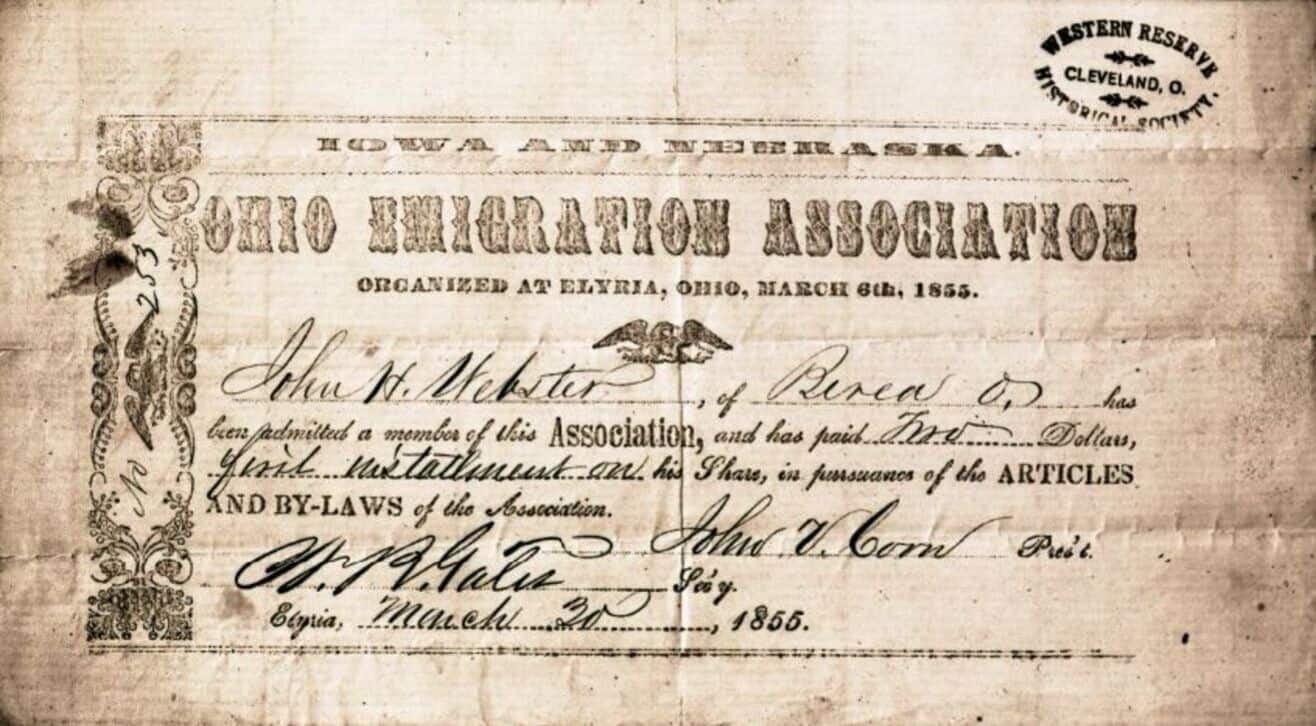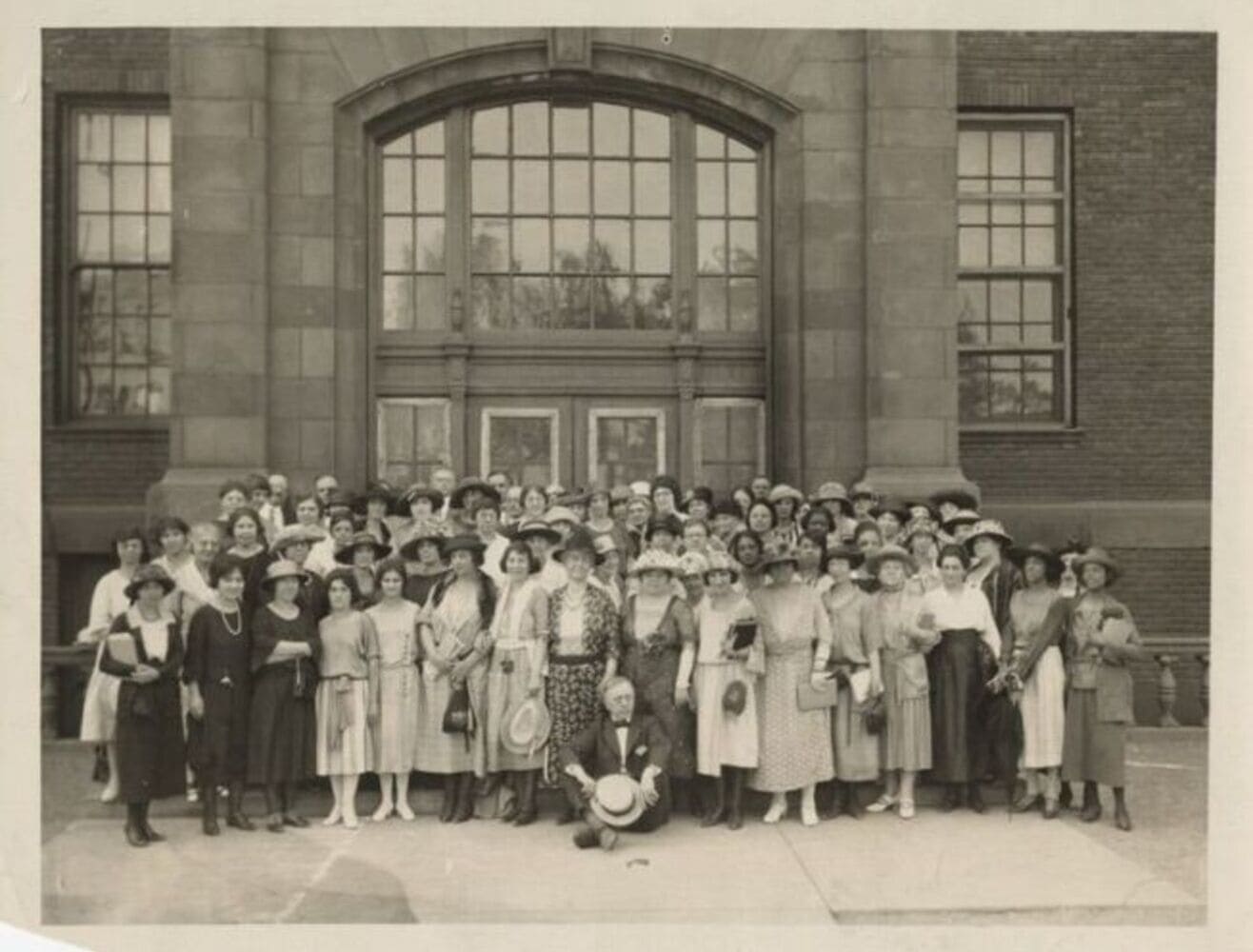Most of us, when considering our family history, often focus on the story of an ancestor who went from there (Asia, Europe, the American South, Mexico, and other places around the globe.) to here – Northeastern Ohio.
Using the records we find in a library like that of the Historical Society, or on-line sources, we try to reconstruct the story of the person who made the journey and then attempt to imagine how they felt when the left the familiar for someplace new. The “prize” in that research is locating that person in time and space – where did they live before, when did they come, how did they come, who came with them? It’s an intriguing task, not unlike putting a puzzle together. But there’s always a piece or two missing.

Receipt of payment to join the Ohio Emigration Association, 1855. Image courtesy of the WRHS Library.
Once focused on “founders” and prominent figures, genealogy expanded beginning in the 1960s to encompass the multiple ethnicities, those groups whose arrival in northeast Ohio created the multi-cultural community and region we know today. So the stories of “from there to here” are now more diverse than ever –ranging from those which relate to a distant ancestor who came from the British Isles, to those of people whose grandparents may have come more recently from India or Turkey – and, indeed, to those whose ancestry dates back to this continent for thousands of years, for Native Americans are part of this chain of movement to our region.
Yet, even though we may know who was the first in our family to come to Greater Cleveland, there is something we can not often know with certainty. Even if we have letters or memoirs of a migrant or immigrant ancestor, it is still difficult to understand the feelings and emotions of leaving an old home and arriving in a new, often very strange place. We can speculate and imagine what it was like – but the only person who would know with certainty is the ancestor. Intimate, intricate, and complex emotions are often bound up within ourselves. It’s that elusive piece of the puzzle.

Slovenian family in the 1900s. Image courtesy of the WRHS Library.
The important thing to grasp is that each of us has a story of a move to a new beginning, and why not? Noted immigration historian Dirk Hoerder has written that migration and immigration (or if you will, movement) is one of the common factors that binds us together as human beings – we’ve been moving from place to place throughout time. If one wants to be Biblical –ever since Adam and Eve left the Garden of Eden.
While it is important and satisfying for each of us personally to find our place in the history of migration, or simply to understand the scope of this global movement, it is more critical that we empathize with those who are seeking a new beginning today. Doing so honors our own pasts. Every upheaval in the world has echoed and will continue to echo in Greater Cleveland. In the years after World War II, homeless refugees found their way to our community.

Americanization Institute 1910s. Image courtesy of the WRHS Library.
Again, after the collapse of South Vietnam we became a new home for those who fled the new regime. Today we are welcoming those who are fleeing the Taliban in Afghanistan. And now, with the horrific invasion of Ukraine, we will again be a haven for Ukrainians – just as we were after World War II. We cannot live in the past and ignore the present.
Perhaps, rather than seeking the almost impossible – coming to know exactly what our ancestors felt when they left the familiar for the new — we should meet, assist and come to know those who are arriving now. Their stories need to be heard and understood. And in those stories we might better sense our own history.